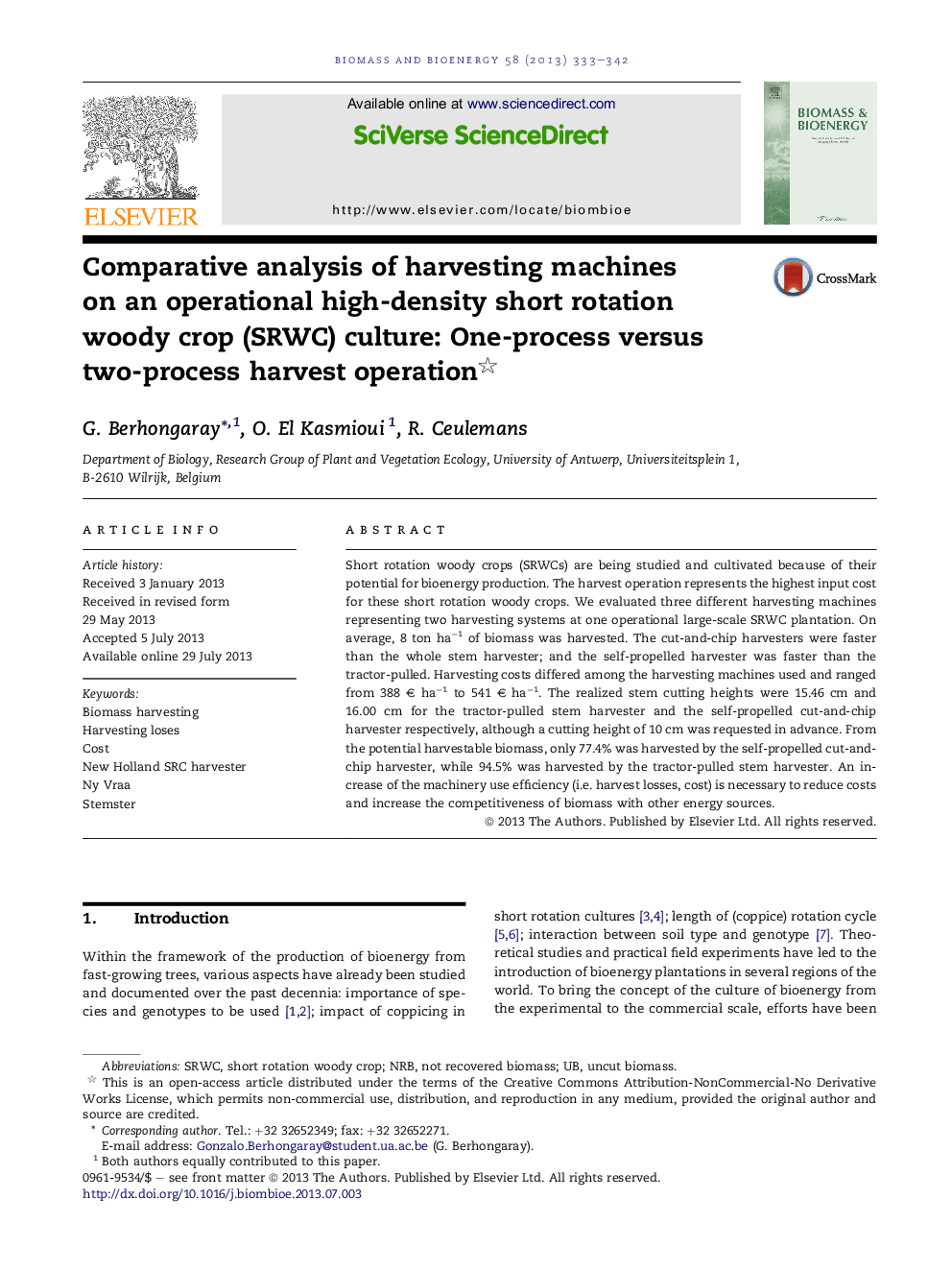| Article ID | Journal | Published Year | Pages | File Type |
|---|---|---|---|---|
| 7065027 | Biomass and Bioenergy | 2013 | 10 Pages |
Abstract
Short rotation woody crops (SRWCs) are being studied and cultivated because of their potential for bioenergy production. The harvest operation represents the highest input cost for these short rotation woody crops. We evaluated three different harvesting machines representing two harvesting systems at one operational large-scale SRWC plantation. On average, 8 ton haâ1 of biomass was harvested. The cut-and-chip harvesters were faster than the whole stem harvester; and the self-propelled harvester was faster than the tractor-pulled. Harvesting costs differed among the harvesting machines used and ranged from 388 â¬Â haâ1 to 541 â¬Â haâ1. The realized stem cutting heights were 15.46 cm and 16.00 cm for the tractor-pulled stem harvester and the self-propelled cut-and-chip harvester respectively, although a cutting height of 10 cm was requested in advance. From the potential harvestable biomass, only 77.4% was harvested by the self-propelled cut-and-chip harvester, while 94.5% was harvested by the tractor-pulled stem harvester. An increase of the machinery use efficiency (i.e. harvest losses, cost) is necessary to reduce costs and increase the competitiveness of biomass with other energy sources.
Related Topics
Physical Sciences and Engineering
Chemical Engineering
Process Chemistry and Technology
Authors
G. Berhongaray, O. El Kasmioui, R. Ceulemans,
